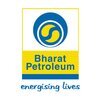Filter interviews by
IndianOil Petronas Fireman Interview Questions and Answers
IndianOil Petronas Fireman Interview Experiences
1 interview found
Interview Questionnaire
1 Question
- Q1. Tell me something about your company
Interview Preparation Tips
Top trending discussions






Interview questions from similar companies


(2 Questions)
- Q1. Abi fire safety types questions
- Q2. Abi fire & safety types
Interview Preparation Tips

Fire & Safety Supervisor Interview Questions & Answers
Indraprastha Gasposted on 6 Sep 2021
I applied via Walk-in and was interviewed in Mar 2021. There was 1 interview round.
Interview Questionnaire
1 Question
- Q1. What is Co2 flooding system
- Ans.
CO2 flooding system is a fire suppression system that uses carbon dioxide gas to extinguish fires.
CO2 flooding system is commonly used in areas where water-based fire suppression systems are not suitable, such as electrical rooms, data centers, and engine rooms.
It works by releasing a high concentration of carbon dioxide gas into the protected area, displacing oxygen and suffocating the fire.
CO2 flooding systems are ty...
Interview Preparation Tips

I applied via Walk-in and was interviewed in Jan 2021. There was 1 interview round.
Interview Questionnaire
4 Questions
- Q1. What is co2 flooding system
- Ans.
CO2 flooding system is a fire suppression system that uses carbon dioxide gas to extinguish fires.
CO2 is a colorless, odorless, and non-conductive gas
It works by displacing oxygen, which is necessary for combustion
CO2 flooding systems are commonly used in areas with electrical equipment or flammable liquids
Examples of places where CO2 flooding systems are used include server rooms, data centers, and chemical storage fa
- Q2. What is Fm200 Suppression system
- Ans.
FM200 is a clean agent fire suppression system that uses a colorless, odorless gas to extinguish fires.
FM200 is a popular choice for data centers, museums, and other facilities where water damage from traditional sprinkler systems would be catastrophic.
The gas is stored in cylinders and released through a network of pipes and nozzles when a fire is detected.
FM200 works by removing heat from the fire and interrupting th...
- Q3. How many types of fire pumps
- Ans.
There are two types of fire pumps: centrifugal and positive displacement.
Centrifugal pumps use a rotating impeller to create a flow of water, while positive displacement pumps use a piston or diaphragm to move water.
Centrifugal pumps are more commonly used in fire suppression systems.
Positive displacement pumps are typically used in high-rise buildings or areas with low water pressure.
Examples of centrifugal pumps incl...
- Q4. How many types of fire extinguishers
- Ans.
There are 5 types of fire extinguishers.
Type A: for fires involving ordinary combustibles like wood, paper, or cloth.
Type B: for fires involving flammable liquids like gasoline or oil.
Type C: for fires involving electrical equipment.
Type D: for fires involving flammable metals like magnesium or titanium.
Type K: for fires involving cooking oils and fats commonly found in commercial kitchens.
Interview Preparation Tips
Tell us how to improve this page.
IndianOil Petronas Interviews By Designations
Interview Questions for Popular Designations
- Fireman and Safety Interview Questions
- Fire & Safety Officer Interview Questions
- Fire Officer Interview Questions
- Fire & Safety Supervisor Interview Questions
- Fire Supervisor Interview Questions
- Fire Alarm Technician Interview Questions
- Fire Technician Interview Questions
- Firefighter Interview Questions
- Show more
Interview Questions from Similar Companies
|
Junior Executive
40
salaries
| ₹5.7 L/yr - ₹8.5 L/yr |
|
Assistant Manager
18
salaries
| ₹9.5 L/yr - ₹20 L/yr |
|
Finance Executive
13
salaries
| ₹7.5 L/yr - ₹10 L/yr |
|
Deputy Manager
11
salaries
| ₹11 L/yr - ₹17.5 L/yr |
|
Executive
8
salaries
| ₹6.7 L/yr - ₹9.6 L/yr |

Bharat Petroleum

Reliance Industries

Nayara Energy

GAIL
- Home >
- Interviews >
- IndianOil Petronas Interview Questions >
- IndianOil Petronas Fireman Interview Questions











